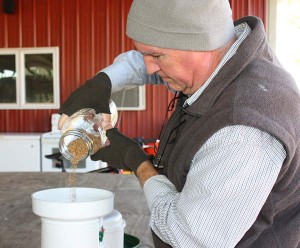We love bread. Hot, gooey and fresh from our oven, it’s just about the best taste imaginable.
Unfortunately the principal ingredient of our bread is hard red wheat that doesn’t grow worth a flip in the hot, humid south. So we still buy our wheat in 50-pound sacks shipped from Montana and store the wheat berries (before milling they will keep unspoiled for years) until we’re ready to mill them for flour.
So what are our options for grains we can grow here in the South? This podcast is our wrestling with this question. We consider corn, of course, along with buckwheat, rye, rice, barley, and oats. And then we throw out some more exotic options like einkorn, emmer, and spelt. We finish with our strategy, which is to continue buying hard red wheat, which can be shipped slowly and inexpensively in its berry form, but also to begin developing alternative grain sources like corn, einkorn, and buckwheat.
Listen – 24:19
As promised, here’s some information about whether grains are essential to our diet. Consider the following:
- The US Dept of Agriculture recommends that at least half the grain we eat be in the form of whole grains.
- In our quick search, we did NOT see any recommendation from the USDA that we should eat grain, only that the grain we eat should be at least one-half whole grain.
- Many are familiar with the “paleo” diet that’s all the rage these days. It is conspicuous for omitting most grains.
- Our bodies need certain amino acids; that’s why we call them “essential.” There are no essential carbohydrates, because our bodies can synthesize them from other foods.
- Grains are nutrient-dense and a relatively cheap source of nutrition.
- Gluten intolerance rates are soaring, approximately five times the rate present in the 1950s.
As you can tell, we don’t yet have a strong opinion on this subject. We continue to eat grains, but we’re aware we do have a choice.

Got some interesting feedback from Tom in northeast Georgia yesterday: